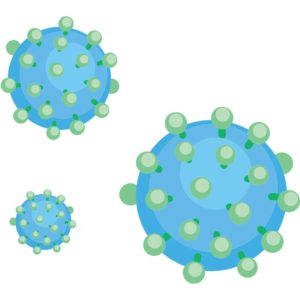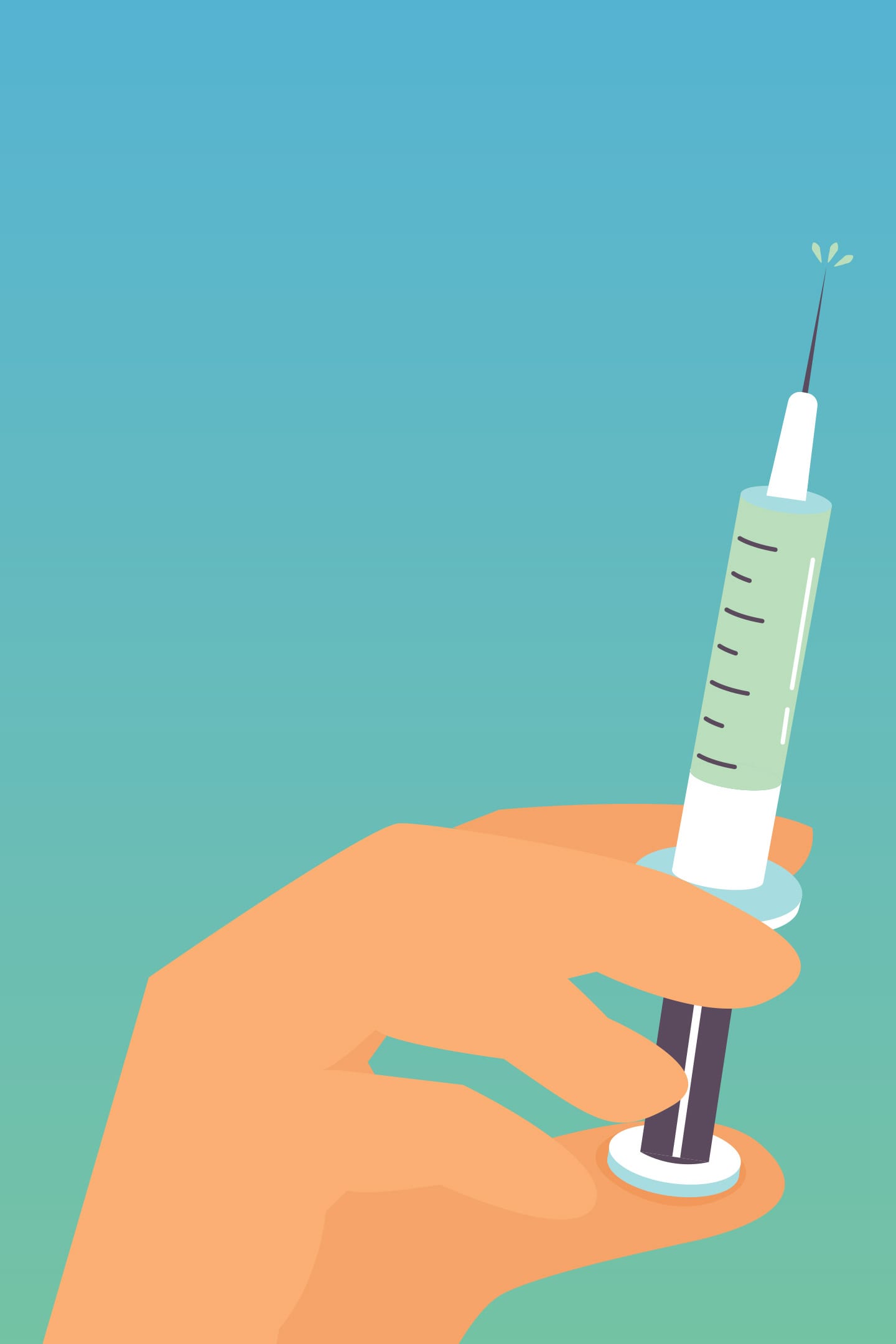Get the 411 on these FAQs
You may have heard of HPV, but did you know that it’s a sexually transmitted infection and that it’s incredibly common? Did you know you may not even know you have it?
HPV is a very real concern for anyone who is sexually active, so we asked local providers Dr. Shevonda Sherrow, owner and OB-GYN at Innovative Women’s Health Specialists, and Chelsea Gondek, nurse practitioner with Parkridge Medical Group – East Ridge, to fill us in on the specifics.
By Lucy Morris



OB-GYN,
Innovative Women’s Health Specialists
Q. What exactly is HPV?
A. “Human papillomavirus, or HPV, is the most common sexually transmitted infection,” Dr. Sherrow explains. In fact, it’s so common that 80% of people get exposed during their lifetime, and 79 million Americans are currently living with the infection. There are around 200 strains of the virus, some of which are lower risk (called ‘non-oncogenic’) and nothing to be overly concerned about, while other high-risk (‘oncogenic’) strains can lead to the progression of cervical and other cancers. To understand the concept of the various strains, Dr. Sherrow says to think of it like a family surname. “The Smiths are all related, but Joe and Jill Smith are very different.”


Q. What do the symptoms look like?
A. Typically, you don’t experience any symptoms with an HPV infection, so you can have it for a long time without knowing. Some strains, however, do cause symptoms. “Symptoms vary based on the subtype you are infected with and also your own immune system health,” explains Dr. Sherrow.
Low-risk strains can cause genital warts, which look like small, fleshy bumps. While a nuisance, the strains that cause genital warts do not lead to cervical cancer. Rather, cervical cancer is caused by high-risk strains and doesn’t tend to show up for years or even decades after someone is infected with HPV.
It’s important to note that just because you don’t have symptoms, doesn’t mean you’re not infected. “A major misconception about HPV is that many people believe the absence of symptoms means they’re not infected,” says Gondek. “Because HPV can present asymptomatically, it is critically important to have annual appointments with a physician.”



Nurse Practitioner, Parkridge Medical Group – East Ridge
Q. How does HPV spread?
A. The most concerning strains of HPV are spread through skin-to-skin contact during sexual activity. Gondek explains, “Individuals can acquire HPV if their mouth or genitals touch the genitals of someone else who is infected. This can happen through all forms of sexual activity including oral, anal, and vaginal sex. HPV can also be spread through close genital-to-genital contact even if the individual does not have sex.”
It’s also important to note that HPV can be passed to you even if your partner isn’t experiencing symptoms, which can make it hard to determine when you contracted the infection.
While other strains can be passed through non-sexual activity – for instance, some can be picked up while walking barefoot in a public shower – these strains cannot lead to serious complications like cervical cancer, and are therefore not anything to be particularly concerned about.
Q. Who’s most at risk?
A. Anyone who is sexually active is at risk, but more unprotected partners equates to a higher risk. Dr. Sherrow explains, “Data shows that 75-80% of sexually active Americans are infected with HPV. The more partners you have and are sexually active with without protection, the more likely one or many of those partners are infected with HPV.” (Remember: “sexually active” doesn’t just mean full-on intercourse!) Women with chronic yeast infections are also at an increased risk, and presently, women in their teens and early 20s in the United States make up the highest percentage of those infected. (That being said, there are currently no FDA-approved detection tests for men.)
Q. How do I know if I have it?
A. Since it’s often asymptomatic, an irregular Pap test may be the first sign that you have or had an HPV infection. So, don’t skip your regular checkups! Gondek shares, “According to American College of Obstetricians and Gynecologists (ACOG) recommendations, patients should start getting regular Pap testing at 21-29 years old and repeat every three years. Women aged 30-65 years should have a Pap test and HPV test completed every five years.”
Q. How is it treated?
A. There is currently no cure for HPV; however, most HPV infections clear up on their own within about two years. “Most people will clear the virus from their immune system and produce antibodies against the infection within a few years of acquiring it,” says Gondek.
That being said, the health of your immune system plays a role. Folks with conditions like diabetes, lupus, and HIV, to name a few, may not ever clear the virus, and smokers have a decreased likelihood of clearing the virus on their own as well.
The persistent infections, or the ones that don’t clear up on their own, are the ones that can lead to cancer-causing cell abnormalities down the road.



Q. How can I protect myself?
A. There are a couple of methods to lower your risk of developing the infection. The first is to remain abstinent until marriage and to ensure your partner does the same. If that’s not possible, using a condom with each sexual encounter and limiting the number of lifetime partners you have can reduce your risk. But the most effective method for preventing HPV is vaccination.
According to Dr. Sherrow, there are three vaccines approved for use against HPV. “These vaccines vary on the subtypes targeted. Subtypes 6 and 11 are associated with genital warts, while subtypes 16 and 18 are associated with 70% of cervical cancers in the U.S. and 30-40%
of penile cancers.”
The Advisory Committee on Immunization Practices (ACIP) recommends routine vaccination against HPV at age 11 or 12, though the vaccination is approved for females up to age 26, and males up to age 21. Girls and boys who begin the series between the ages of 9 and 14 receive a two-dose schedule, and those who begin the series between the ages of 15 and 26 – and those who are immunocompromised – receive a three-dose schedule.
Q. I thought only girls needed to get the vaccine?
A. Back in 2006, the original HPV vaccine was only approved for girls. This was because cervical cancer is a prominent female cancer, which made the vaccine easy to study. Just three years later, the vaccine was approved for boys too, and more recent studies suggest that the vaccine shows a similar effectiveness in males.
Considering that there are an estimated 14 million new genital HPV infections each year in the U.S. and half are in 15- to 24-year-olds, early vaccination for both girls and boys is immensely important. “Vaccination only works before a person gets infected with the virus, which is why health care providers recommend it at a young age,” explains Gondek. The immune system of a child also responds better to the vaccine than that of an older teen or young adult.
HPV is incredibly common (hello, 80% of us will be infected at some point!), so there is no reason to feel stigmatized about it. Consider vaccination for your children and be proactive about your own health by practicing safe sex and getting regular checkups with your OB-GYN. With these methods, you can reduce the likelihood of infection and subsequent complications. HS

